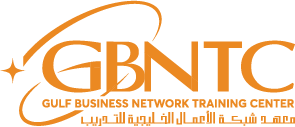Life tends to accumulate an array of belongings over the years, leading many to face the pressing challenge of figuring out the fate of their possessions. Whether you’re considering tossing out items, giving them to charity, or putting them up for sale, the process often requires a thoughtful approach. Understanding your options can ease the strain on both your space and your mind. For a detailed guide on this topic, you can explore this resource that helps clarify your choices.
One of the most significant factors when evaluating personal items is the condition of each piece. A judicious review not only helps in making informed decisions but also reflects on the emotional value associated with certain things. Applying the time test can help you determine whether an item deserves a new life or if it has run its course. This thoughtful consideration fosters a more organized environment and brings clarity to the decision-making process.
Assessing the Condition and Usefulness of Your Items
Determining the fate of your belongings requires a keen eye for both their condition and utility. Start by examining each item thoroughly. Look for any signs of wear, damage, or deterioration that may render it unsuitable for others. Items that are still in good shape may have potential for a resale market. Consulting resources like https://949junkremovalservices.com/ can guide you on the best options for various conditions.
Next, apply a set of clutter rules to help streamline your evaluation process. Consider the profit potential of each item, asking yourself if it could still provide value to someone else. Implement a time test: if you haven’t used the item in the last year, it may be time to part ways. Additionally, think about your personal emotional connection–use a sentimental filter to decide if the item holds enough significance to warrant keeping it versus matching it with a charity that could benefit from it.
Understanding the Value of Items for Sale
To determine an item’s worth, it’s essential to analyze its condition and resale value. An object in pristine state will naturally command a higher price compared to one that shows signs of heavy use. Online marketplaces often provide insights into current pricing trends, which can help gauge how much you might expect to receive. A quick search can reveal comparable listings, ensuring you set a reasonable expectation for potential earnings.
Introducing a sentimental filter can aid in differentiating between items that hold personal significance and those that may be purely clutter. While some possessions may evoke cherished memories, they may not possess high profit potential in the resale market. The time test is also invaluable; if a piece has not been used in a significant period, it might be time to consider whether it aligns with your current lifestyle or could find a better home, potentially matching a charity’s needs. Balancing item condition with clutter rules can lead to more meaningful choices when sorting belongings.
Finding the Right Charities for Donations
Identifying suitable organizations for giving away your items can significantly enhance the impact of your contribution. Researching charities aligned with your values–be it environmental conservation, healthcare support, or community development–ensures your possessions benefit a cause you genuinely care about. Online platforms can facilitate this search, enabling you to explore various charities and their missions.
Before finalizing your choice, consider the condition of your items. If they passed the time test and remain in good condition, you might prioritize charities known for their resale value, maximizing profit potential for their initiatives. Using a sentimental filter may also help you sift through emotional attachments, directing your donations to cause-driven organizations that can appreciate the value of each contribution and reflect your passion for philanthropy.
Lastly, check for any clutter rules that the charity may have regarding the acceptance of specific items. Some organizations have strict guidelines on what they can accept, which could influence your choices. A well-matched charity can turn your once-unwanted items into resources that foster change and improvement in the community.
Knowing Local Junk Removal Options
Understanding local removal choices can significantly impact your decluttering process. Researching available services in your area helps in determining the best fit for items you no longer need. Many companies focus on eco-friendly practices, ensuring responsible disposal. A quick online search or a visit to community boards can provide a range of reputable options.
Consider reaching out to local waste management facilities to learn about specific recycling programs. Engaging with community groups can reveal additional resources, such as personal recommendations for services offering pickup or drop-off options. Utilizing platforms like Yelp can also assist in evaluating customer experiences with various providers.
- Profit potential: When seeking financial returns from possessions, focus on platforms that specialize in resale.
- Item condition: Assess the state of your belongings before selecting a removal service; some may have specific guidelines.
- Clutter rules: Familiarize yourself with local guidelines on what can be disposed of, recycled, or donated.
- Charity match: If considering giving, find organizations that align with your values and focus on items that they accept.
Employing a sentimental filter can assist in your decision-making, as you evaluate the emotional attachment to items in light of their practical use. The time test can further aid in sorting: if you haven’t used it in the past year, it might be time to part ways. This strategic approach allows for a cleaner environment while maximizing the potential that your items hold.


Comments are closed